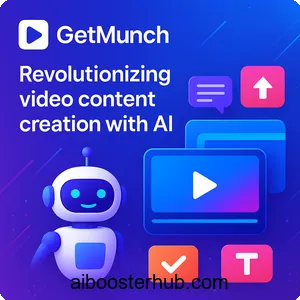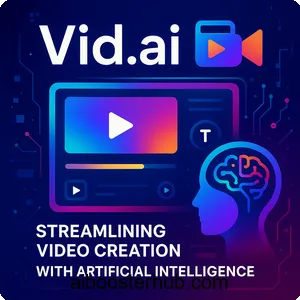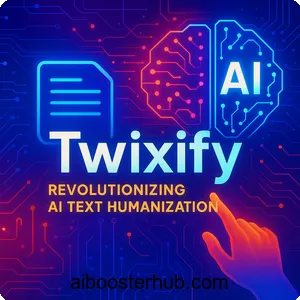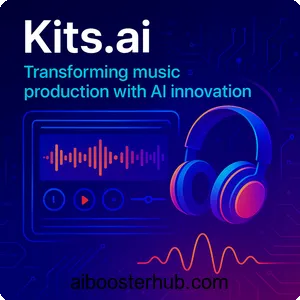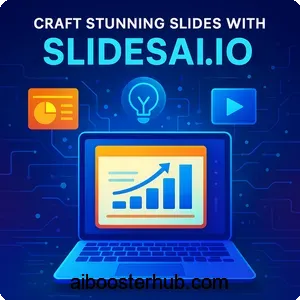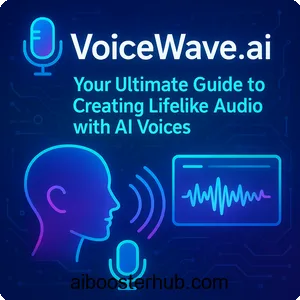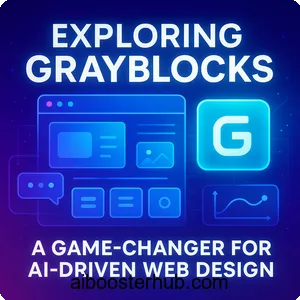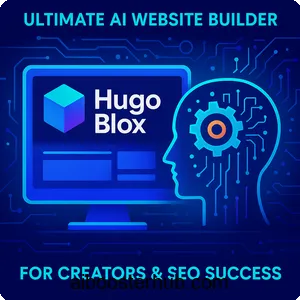Generative AI for content creation – Advanced techniques
The rise of generative AI has transformed how we create, curate, and consume content. From crafting compelling narratives to designing visually stunning graphics, generative AI for content creation is redefining creative workflows across industries. This article explores advanced techniques, practical applications of generative AI, and real-world generative AI examples to help you harness its potential for your projects. Whether you’re a marketer, writer, designer, or business owner, understanding the generative AI uses can unlock new opportunities for innovation and efficiency.
This comprehensive guide dives into the mechanics of generative AI, its applications, and how you can leverage cutting-edge tools to elevate your content creation process.
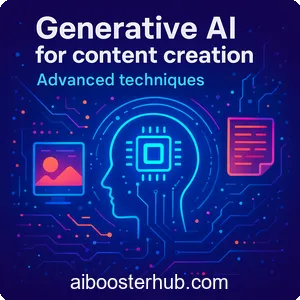
Content
Toggle1. Understanding generative AI for content creation
Generative AI refers to artificial intelligence systems that can generate new content, such as text, images, videos, or audio, based on patterns learned from vast datasets. Unlike traditional AI, which might analyze or classify data, generative AI applications focus on creating original outputs that mimic human creativity. These systems rely on advanced machine learning models, such as large language models (LLMs), generative adversarial networks (GANs), and diffusion models, to produce high-quality content.
For content creators, generative AI acts as a powerful assistant, streamlining tasks that once required hours of manual effort. From drafting blog posts to generating social media visuals, the generative AI uses span a wide range of creative and technical domains. Its ability to adapt to specific styles, tones, and formats makes it a game-changer for professionals seeking to scale their output without sacrificing quality.
What makes generative AI unique?
At its core, generative AI learns from massive datasets to understand context, structure, and aesthetics. For example, models like GPT-4 or DALL·E 3 analyze millions of text or image samples to generate outputs that align with user prompts. This learning process enables the AI to produce content that feels human-like, whether it’s a poetic blog introduction or a photorealistic image.
Why it matters for content creation
The applications of generative AI in content creation are vast. It empowers creators to overcome writer’s block, automate repetitive tasks, and explore creative possibilities that might not have been feasible otherwise. By integrating generative AI into your workflow, you can save time, reduce costs, and focus on high-value strategic tasks.
2. Key applications of generative AI in content creation

The versatility of generative AI for content creation lies in its ability to cater to diverse needs. Below, we explore some of the most impactful generative AI applications that are reshaping industries.
Text generation for blogs, articles, and copywriting
One of the most popular generative AI uses is text generation. Tools like Grok, Jasper, or Copy.ai can draft blog posts, product descriptions, or marketing copy in seconds. These tools allow users to specify tone, style, and target audience, ensuring the output aligns with brand guidelines. For instance, a marketer can input a prompt like “Write a 500-word blog post about sustainable fashion in a conversational tone,” and the AI will deliver a polished draft.
Advanced techniques include fine-tuning models with brand-specific data to ensure consistency. For example, feeding an AI tool with previous blog posts can help it mimic your voice, making the content feel authentic.
Visual content creation
Generative AI is not limited to text. Tools like Midjourney, Stable Diffusion, and DALL·E 3 excel at creating images, illustrations, and even videos from text prompts. These generative AI examples demonstrate how designers can generate unique visuals for websites, social media, or advertising campaigns. For instance, a prompt like “Create a futuristic cityscape at sunset” can produce a stunning image ready for use in a campaign.
Advanced users can leverage techniques like inpainting (editing specific parts of an image) or style transfer (applying the aesthetic of one image to another) to refine outputs further.
Audio and music production
Generative AI is also making waves in audio content creation. Tools like AIVA or Soundraw can compose music tracks tailored to specific genres or moods. Podcasters can use AI to generate intro music or even synthetic voices for narration. These generative AI applications are particularly useful for creators who lack access to professional studios or composers.
Video content and animation
The rise of tools like Runway ML and Synthesia has brought generative AI into video production. These platforms can create short animations, edit videos, or even generate talking avatars from text inputs. For example, businesses can create professional explainer videos without hiring actors or editors, saving significant time and resources.
3. Advanced techniques for leveraging generative AI
To truly maximize the potential of generative AI for content creation, you need to go beyond basic prompts. Here are advanced techniques to elevate your results.
Prompt engineering
Prompt engineering is the art of crafting precise, detailed instructions to guide AI outputs. Instead of a vague prompt like “Write a blog post,” use something specific: “Write a 1,000-word blog post about generative AI for content creation, targeting small business owners, with a professional yet approachable tone.” This level of detail ensures the AI delivers relevant, high-quality content.
Experiment with chained prompts, where you break down complex tasks into smaller steps. For example, first ask the AI to outline a blog post, then request it to expand each section. This iterative approach often yields better results.
Fine-tuning models
For businesses with specific needs, fine-tuning AI models can be a game-changer. By training a model on your existing content, you can ensure it reflects your brand’s voice, style, and terminology. For instance, a tech company might fine-tune an AI to use industry-specific jargon accurately.
Combining multiple AI tools
Advanced users often combine multiple generative AI applications to create richer content. For example, you might use a text-based AI to write a script, a visual AI to generate accompanying images, and an audio AI to produce a soundtrack. This multi-tool approach allows for seamless content pipelines that deliver professional-grade results.
Automating workflows
Generative AI can be integrated into automated workflows using APIs or no-code platforms like Zapier. For example, you could set up a system where a blog post is automatically generated, formatted, and posted to your website whenever you publish a new product. This level of automation is ideal for scaling content production.
4. Generative AI examples in action

To illustrate the power of generative AI for content creation, let’s look at real-world generative AI examples across different industries.
Marketing and advertising
A global e-commerce brand used generative AI to create personalized ad copy for thousands of products. By feeding product descriptions into an AI tool, they generated tailored social media posts in multiple languages, increasing click-through rates by 20%. This is a prime example of how generative AI uses can scale marketing efforts.
Publishing and journalism
Newsrooms are using generative AI to draft initial versions of articles, particularly for data-heavy topics like sports or finance. For instance, The Washington Post’s Heliograf tool generates game recaps by analyzing sports data, freeing journalists to focus on in-depth reporting.
Design and creative industries
A graphic designer used Stable Diffusion to create a series of unique book covers for a self-publishing author. By tweaking prompts and styles, the designer produced dozens of high-quality designs in hours, a task that would have taken weeks manually.
Education and e-learning
Educators are leveraging generative AI to create customized learning materials. For example, an AI tool can generate practice quizzes, explainer videos, or interactive simulations based on a curriculum, making education more engaging and accessible.
5. Benefits and challenges of generative AI
While generative AI for content creation offers immense potential, it’s important to understand both its advantages and limitations.
Benefits
- Efficiency: Tasks that once took hours, like writing a blog post or designing a graphic, can now be completed in minutes.
- Scalability: Generative AI allows businesses to produce large volumes of content without proportional increases in time or cost.
- Creativity boost: AI can suggest ideas, styles, or formats that inspire human creators to think outside the box.
- Cost savings: Small businesses and creators can access professional-grade tools without hiring expensive specialists.
Challenges
- Quality control: AI-generated content may require human editing to ensure accuracy, coherence, or brand alignment.
- Ethical concerns: Issues like copyright, plagiarism, or biased outputs need careful consideration when using generative AI.
- Learning curve: Mastering advanced techniques like prompt engineering or fine-tuning requires time and experimentation.
6. Best practices for implementing generative AI

To make the most of generative AI applications, follow these best practices to ensure high-quality, ethical, and effective content creation.
Start with clear objectives
Define what you want to achieve with generative AI. Are you aiming to save time, enhance creativity, or scale production? Clear goals will guide your choice of tools and techniques.
Iterate and refine
Don’t expect perfect results on the first try. Experiment with different prompts, tools, and settings to fine-tune outputs. Keep a feedback loop where you review and improve AI-generated content.
Combine AI with human oversight
While generative AI is powerful, human creativity and judgment are irreplaceable. Use AI as a tool to augment, not replace, your expertise. Always review outputs for accuracy and alignment with your brand.
Stay ethical
Be transparent about using AI-generated content, especially in sensitive fields like journalism or education. Ensure your AI tools comply with copyright laws and ethical standards.
7. The future of generative AI in content creation
The future of generative AI for content creation is bright, with advancements happening at a rapid pace. Emerging trends include:
- Multimodal AI: Models that seamlessly combine text, images, and audio to create holistic content experiences.
- Real-time collaboration: AI tools that work alongside humans in real time, offering suggestions as you write or design.
- Hyper-personalization: AI that tailors content to individual users based on their preferences, behavior, or demographics.
- Improved ethics and regulation: As generative AI matures, expect better frameworks to address copyright, bias, and transparency.
By staying ahead of these trends, content creators can position themselves as leaders in their fields, leveraging generative AI uses to drive innovation.
8. Conclusion
Generative AI for content creation is more than a trend—it’s a transformative force that’s reshaping how we produce and consume content. From crafting compelling blog posts to designing stunning visuals, the applications of generative AI offer endless possibilities for creators. By mastering advanced techniques like prompt engineering, fine-tuning, and workflow automation, you can unlock the full potential of generative AI examples to elevate your work.
Whether you’re a solo creator or part of a large organization, integrating generative AI into your content strategy can save time, boost creativity, and drive results. Start experimenting with these tools today, and explore how generative AI uses can take your content to the next level. For more insights on AI tools, visit our website and dive into the future of content creation.

